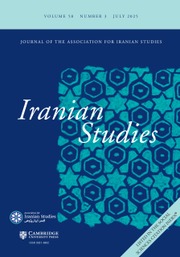No CrossRef data available.
Article contents
Tammarītu, “king of Ḫidalu,” Tammarītu, “king of Elam”
Published online by Cambridge University Press: 02 December 2024
Abstract
The reign of Tammarītu is one of the most enigmatic parts of Neo-Elamite history because documents have attested that two individuals with that name but two different titles, “king of Ḫidalu” and “king of Elam,” played significant roles in the historical events. The lack of dates in many documents complicates establishing a secure chronology and attributing events to Tammarītu, king of Ḫidalu, or Tammarītu II/Tammarītu, king of Elam. Scholars generally agree that the documents in which Tammarītu is called “king of Elam” cannot be attributed to Tammarītu, king of Ḫidalu. However, a comparison of Ashurbanipal's annals with other available documents does not support this viewpoint.
- Type
- Article
- Information
- Copyright
- Copyright © The Author(s), 2024. Published by Cambridge University Press on behalf of The Association for Iranian Studies



